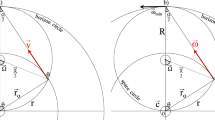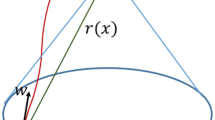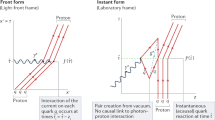Abstract
SINCE the results of the Eclipse Expedition of May last have been made public a very great deal of general interest has been displayed in a theory which, until a few weeks ago, was known only to mathematicians and physicists. Even among these, not many could offer any adequate explanation of the new view of space and time and their mutual relations, while some regarded the whole question as a mathematical joke which led to interesting results of no practical value; and probably not a few thought that a non-Euclidean system of geometry was inadmissible in any physical theory of the universe. On the other hand, there are some who have gone so far as to advocate that non-Euclidean geometry should be taught to boys and girls in secondary schools. The published books on this subject do not come into touch with any ordinary experience, and the whole subject, consequently, has been regarded as a mathematical fiction. So far from this being so, most people have actually seen the ordinary operations of life proceeding in non-Euclidean space, though they have not realised the meaning of all they have seen. In the space behind a plane mirror objects are reversed, right and left (perverted), though in all other respects they correspond precisely to the real objects in front of the mirror of which they are the images, but in the space behind a convex mirror this is not the case. The geometry of this space and the behaviour of moving bodies therein, as viewed by the external observer and as studied by an intelligent being within the image space, say, the image of the external observer, who applies to the images and their movements the same standards of measurement as the external observer applies to the real objects in his own space, introduce us to a non-Euclidean space which is the subject of common observation, and prepare the mind for the reception of many of the conclusions of the now famous theory of relativity. In the discussion of that theory two observers are supposed to be moving relatively to one another, each with his own set of measuring instruments and each living in his own world or system, and the differences between the phenomena which occur in each system as measured by the dweller in that system and by the external observer form the basis of the theory. Corresponding to these two observers we propose to consider the actual observer outside the convex mirror and his supposed intelligent image behind the mirror, and to consider how the images behind the mirror, treated as real objects, appear to behave to both observers.
This is a preview of subscription content, access via your institution
Access options
Subscribe to this journal
Receive 51 print issues and online access
$199.00 per year
only $3.90 per issue
Buy this article
- Purchase on Springer Link
- Instant access to full article PDF
Prices may be subject to local taxes which are calculated during checkout
Similar content being viewed by others
Rights and permissions
About this article
Cite this article
G., W. Euclid, Newton, and Einstein. Nature 104, 627–630 (1920). https://doi.org/10.1038/104627a0
Issue Date:
DOI: https://doi.org/10.1038/104627a0
Comments
By submitting a comment you agree to abide by our Terms and Community Guidelines. If you find something abusive or that does not comply with our terms or guidelines please flag it as inappropriate.



